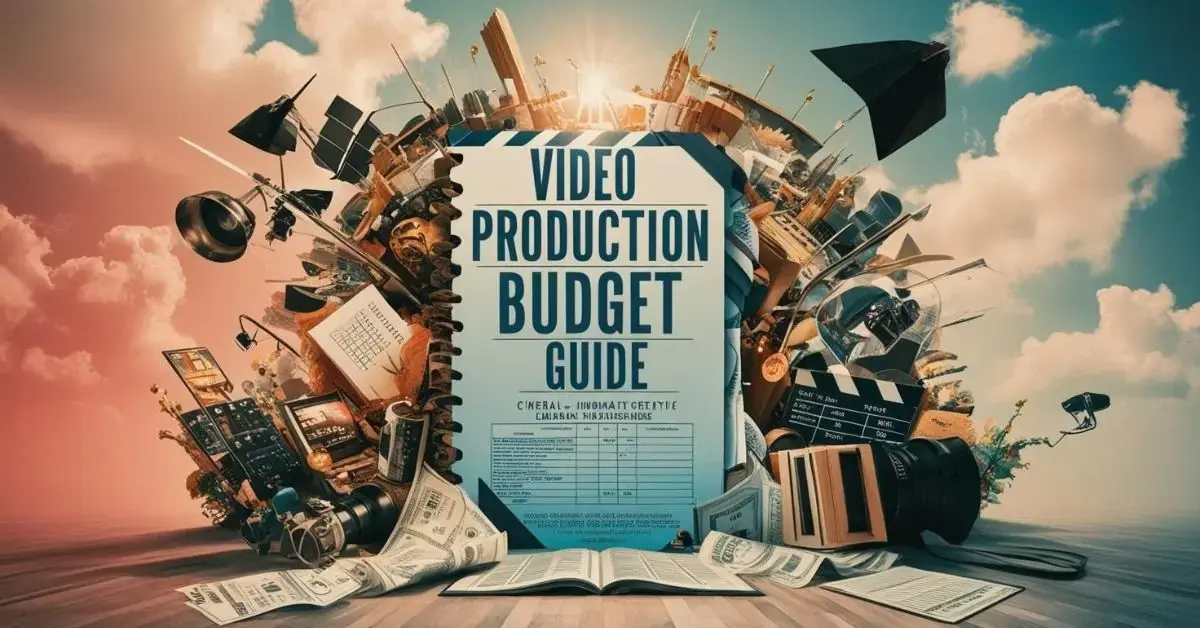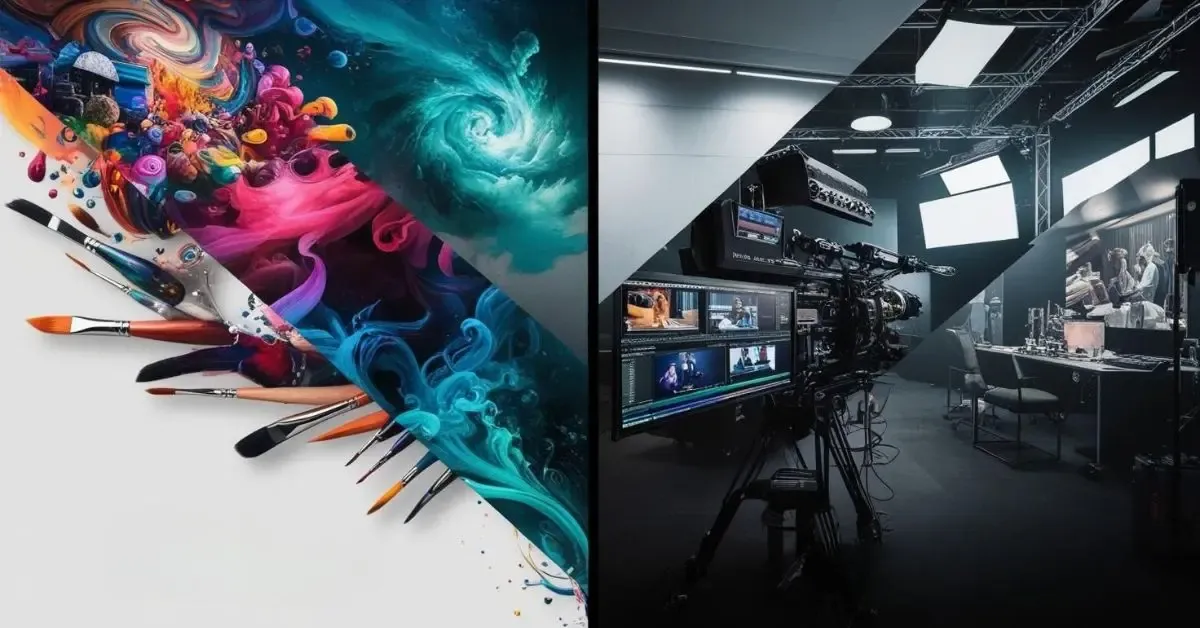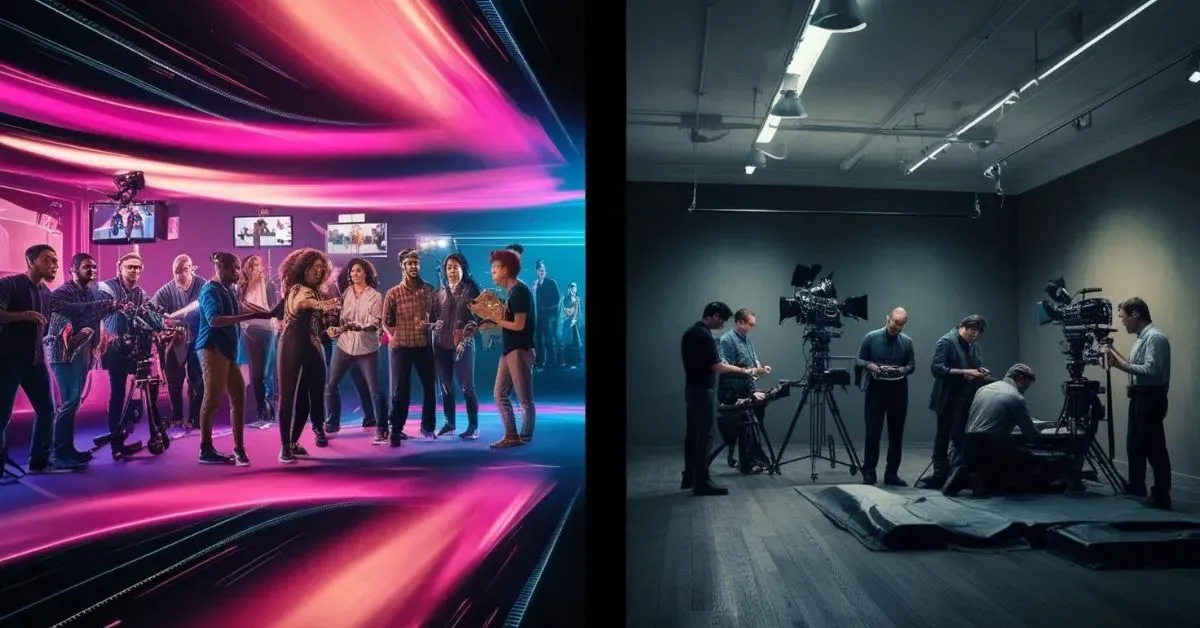Creativity isn’t enough in today’s ever-changing world of video production. Understanding a well-defined budget is indeed the foundation of a project, and without it, a project goes nowhere. Whether you’re producing an online video, a commercial, or a corporate video production, it is necessary to have a budget for everything so you can produce a high-quality video without incurring high costs.
The modern, well-structured video production budget would incorporate various segments of pre-production, equipment costs, location fees, talent, crew salaries, post-production, editing, and distribution expenses. Understanding these cost factors beforehand will keep you from getting caught off guard by expensive surprises and will not hinder efficiency at any point.
In this guide, we will explain what is needed in a video budget, offer a range of practical suggestions for managing cost, and discuss common budgeting mistakes to avoid. Resource allocation can help you avoid overspending while making videos that have a great impact.
Importance of Budgeting in Video Production
You can create an actual budget that helps you determine where you spend your money and how much you need to budget so you can avoid sudden expenses and provide a high-quality product while staying within your budget. How to budget is essential for all projects, big or small, creative video productions to significant productions.
A well-structured budget:
- Provides a Roadmap: It helps make decisions in the pre and post-production process, making it clear.
- Controls Spending: It helps prevent overspending, allocate finances to core areas, and keep the project within budget cuts.
- Maximizes ROI: It ensures that the resources are used efficiently, producing the highest quality while remaining cost-effective.
- Facilitates Communication: It helps team members and stakeholders be transparent on what they need and are spending.
- Reduces Financial Risks: It identifies potential cost over / run outs before the project finalize production/delivery.
- Improves Resource Allocation: It balances spending between talent, equipment, location, and postproduction to maintain production value.
Overview of Common Budget Components
These core components, whichever size your video production budget may be, are in every video production budget.
- Pre-Production Costs: This covers all the levels of planning, from concept development to script writing, storyboarding, location surveys, casting, and schedule. Proper pre-production planning acts as a buffer to prevent any filming delays.
- Production Costs: This includes a breakdown of equipment rental, crew wages, on-set logistics (catering, transportation), location permit, set design, props, wardrobe, and makeup. Another method to reduce set run costs is to compete for efficiency on set.
- Post-Production Costs: These include editing, visual effects (VFX), sound design, color grading, and licensing of music and motion graphics. Investing in professional post-production means a final product that will satisfy industry standards.
- Marketing and Distribution Costs: It’s focused on promoting and distributing of a finished video via online advertising, social media campaigns and public relations efforts. Moreover, the best of the best in distribution is having a well-developed plan for distribution that gets maximum audience reach and return on investment.
How to Create a Video Production Budget?
There’s no reason to be overwhelmed when creating a video production budget as they are, however, when done in a structured way. Furthermore, with a well-thought-out budget everything goes smoothly, every unexpected cost is called for, and the final product is of the best quality. The key steps involved in managing your production costs are:
1. Define Your Objectives
Your first step is to decide on your video’s intended purpose, the target audience, and the channel through which it will be distributed (social, TV, etc.). These determine production quality, resource reallocation, and overall budgeting. A high-end video may be needed for a promotional ad, whereas an internal training video can be made with a lesser budget.
2. Identify Key Requirements
The following outlines all essentials production elements:
- Video Type: Commercial, corporate, tutorial, documentary.
- Crew Size: Directors, cinematographers, editors, production assistants.
- Equipment: Cameras, lighting, microphones, stabilizers.
- Location & Travel: Rent a studio, pay to travel and use location shoots, permits.
- Post-Production: Motion graphics, sound mixing, color grading, voiceovers, editing.
3. Research & Estimate Costs
Rent prices from equipment rental companies, freelance professionals and post-production studios. Include potential hidden costs, for example, licensing fees, reshoots, or extended production line. Likewise, the more detailed your estimates are, the better the control you will have over your expenses.
4. Develop a Budget Plan
Cost out in pre-production, production, and post-production categories. Mark it in a spreadsheet or with some budgeting software and adjust allocations accordingly. In addition, a documented budget empowers transparency among the different stakeholders.
5. Allocate Your Budget Strategically
Spending by project needs. A commercial intended for a higher goal market will require more investment into cinematography and set design, but an explainer video will spend more in animation and post-production. This helps in finding the right balance of producers and consumers, as well as controlling the cost, and can avoid unnecessary expenses while keeping them away from compromising on the production quality.
A video project only starts with a strategic budget. By using the correct planning and managing costs, you will be able to create high-impact content at or below your financial limits.
What Goes into a Video Production Budget?
A well-structured video budget helps execute smoothly, stay within budget, and know the final cost before beginning production. Learning its subunits allows you to allocate resources and avoid overspending and delays.
Pre-Production Costs
- Concept Development & Planning: Brainstorming, creative consultation, refining the video’s vision to articulate with brand objectives are included.
- Scriptwriting & Storyboarding: By hiring professional writers and storyboard artists, you can have a strict narrative, compelling stories, and clear visual guidance which is what you are looking for.
- Location Scouting: Scouting fees, permits, rentals, travel expenses for on location shoots, and other such measures are covered by this, ensuring that the video is shot in the perfect place.
Production Costs
- Equipment Rentals: The amount of camera, lighting, sound equipment costs change dependent on production size and the technical requirements.
- Crew & Personnel: Budgeting is required based on experience and amount of complexity for directors, cinematographers, camera operators, sound technicians and production assistants.
- Logistics & Filming Expenses: We are focusing on ‘efficiency’, which includes travel, product, catering, props, product, set design, wardrobe or makeup for an efficient shoot.
Post-Production & Marketing
- Editing & Effects: This consists of trimming, sync audio, adding effects and motion graphics as well as grading colors to improve the video quality.
- Music & Sound Design: Money for background music, licensed tracks, voiceovers, and sound mixing to make it all facetious.
- Marketing & Distribution: This is about social media promotions, paid ads, SEO plans and a platform placement to get maximum viewership.
Tips for Managing and Reducing Video Production Costs
- Prioritize Essential Elements: Consequently, focus spending on things important to the quality and effectiveness of your video. Cut down on how unnecessary the extras are and stick to what will actually move the content and where we spend the budget.
- Utilize Cost-Effective Equipment: Look for rental options, or think about other cheaper bit of equipment. In addition, budget friendly cameras, drones and lighting setups fail to compromise any professional appeal in many high-quality videos shot.
- Utilize Freelancers and Lean Teams: Use outsourcing of various tasks (editing, script scriptwriting, sound) instead of a huge crew. The trick is to reduce the overhead costs and at the same time you get skilful professionals for each aspect of the production.
- Plan Efficiently and Avoid Overstaffing: With careful planning and scheduling, costs can be avoided and excess staff will not be needed. They typically preplan shoot days, consolidate scenes and have a shot lunch which helps avoid excess rental or crew fees.
- Leverage Existing Resources: Try to reduce location rentals and casting costs by using in-house locations, company employees, or stock footage. Repurpose previous content when possible.
- Optimize Post-Production Workflows: At the start, make sure the editing process is streamlined through an already clear vision and scripts. In addition, the fewer edits that have to be done, the cheaper the editing.
Common Budgeting Mistakes to Avoid
- Underestimating Costs: Research all expenses diligently to avoid budgeting shortfalls and get quotes for all. You don’t want equipment and location permits that are too cheap or post-production services that are too expensive.
- Failing to Plan for Contingencies: Set aside 10–15% of your budget for other circumstances, machinery breakdown, weather delays, reshoot, etc. Having a financial safety net to fall back on means a corner not being cut with commitments in place.
- Poor Communication: The main requirement of staying on budget is clear and consistent communication amongst team members. Failure in alignment can result in delays on creative direction, production schedules, or resource allocation in terms of cost, time, and, in severe cases, return on investment. It always helps in meeting regularly and agreed upon things documented.
- Lack of Flexibility: You must be ready to modify your budget as you progress through the production. Expenses can be affected by creative direction changes, last-minute script changes, or technical challenges. Being flexible enables you to make strategic changes without sacrificing quality.
- Ignoring Post-Production Costs: When budgeting, many people overlook the unexpected expenses associated with editing, color grading, sound design, etc. Keep all post-production elements in mind from the very beginning to avoid any financial strain.
Partner with Royal Digital Agency for Expert Video Production
Effective video production hinges on strategic budgeting. From pre-planning to distribution, appropriate financial management will enable you to achieve your vision while working within your resources. At Royal Digital Agency, we bring expertise in all the areas of video production, so they can make videos that are impactful to your business and also within your budget. We are a complete service provider from concept and scriptwriting to filming, editing and marketing. Bugeting is something our team is very well familiar with and can walk you through the process and help keep it transparent and efficient. If you have a video production need, contact us today for you to get in touch with us and discuss your needs so we can help you create compelling visual content that will bring results.
FAQs
What is the breakdown of video production?
However, video production is roughly divided into three phases: preproduction (script, cast, plan), production (filming), and post-production (ed, VFX, sound mixing). Each phase has associated costs.
Does the production budget include actor salaries?
Yes, indeed, there is such a thing as actor salaries in the budget. The costs will vary drastically based on the actors’ experience, reputation, and the period they stayed involved in the project.
What is an example of a production cost?
Equipment rental (cameras, lighting), crew fees (camera operators, sound technicians) and location permits could all be expressed as production costs. Direct expenses added on during the video production’s filming phase.




